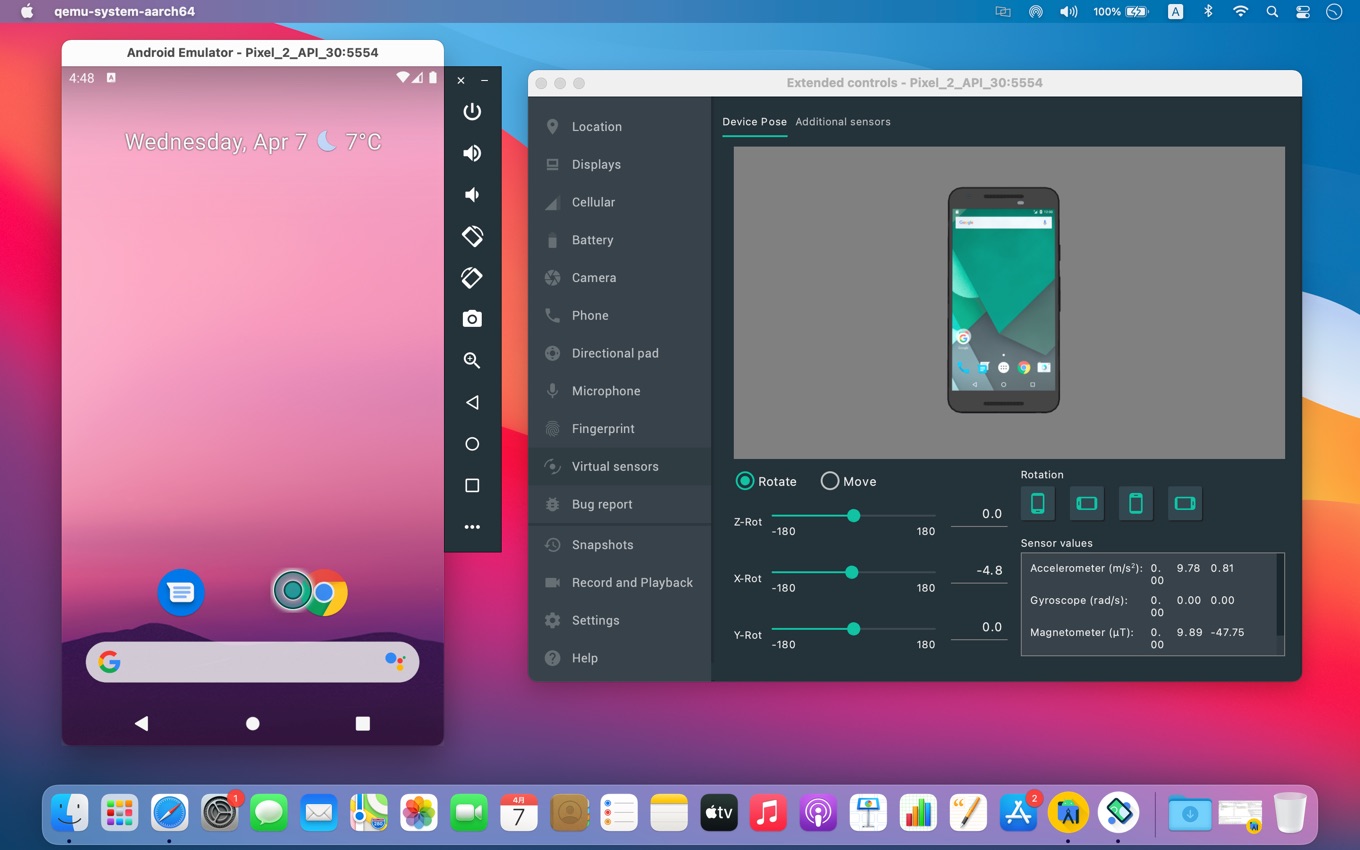- Macos M1 Android Emulator Download
- Any Emulators That Work With M1 Mac
- Android Emulator For Apple M1
- Android Studio M1
Cub cadet 109 hydrostatic manual. This is the second post that I dedicate to talk about configurations using the new M1 Apple processor. As I said in the previous post, these configurations are workarounds until stable versions are released, however, for me, they have been useful and I guess that someone in the same situation as me can benefit from that.
Path:/ Users / $ username / Library / Android / sdk / system-images / android-S / googleapisplaystore / arm64-v8a. Launch Android Studio and click configure AVD Manager. Click create virtual device., select any device, press the Next button and confirm that API level S has been added. Add it to your devices and verify it works with VS Code.
Using Android studio in the new Macbook Air
When you install Android Studio you will get the following warning:

- The Android port has been around for years, and the Dolphin Emulator team has been working on a few major enhancements during the last two months. Dolphin can now operate natively on Apple M1 hardware, and new emulation solutions for Mali GPUs mean that more games than ever perform well on the platform. The developers recently implemented.
- MacBooks with M1 can run Android apps with this software: What you need to know. If you're in need of running Android apps on a significantly bigger screen, the latest update from mobile gaming.
Unable to install Intel® HAXM
Your CPU does not support VT-x.
Unfortunately, your computer does not support hardware-accelerated virtualization.
Here are some of your options:
1 - Use a physical device for testing
2 - Develop on a Windows/OSX computer with an Intel processor that supports VT-x and NX
3 - Develop on a Linux computer that supports VT-x or SVM
4 - Use an Android Virtual Device based on an ARM system image
(This is 10x slower than hardware-accelerated virtualization)
Macos M1 Android Emulator Download
Creating Android virtual device

Android virtual device Pixel_3a_API_30_x86 was successfully created
And also in the Android virtual device (AVD) screen you will read the following warning:
If you want to learn more regarding virtualization in processors you can read the following Wikipedia article, the thing is that our M1 processor doesn’t support VT-x, however, we have options to run an Android Virtual Device.
As the previous message was telling us, we have 4 options. The easiest way to proceed is to use a physical device, but what if you haven’t one available at the moment you are developing?
From now on, we will go with the option of using an Android virtual device based on an ARM system image as options 2 and 3 are not possible to execute.
Using the virtual emulator
Any Emulators That Work With M1 Mac
The only thing that you have to do is to download the last available emulator for Apple silicon processors from Github https://github.com/741g/android-emulator-m1-preview/releases/tag/0.2
Once you have downloaded you have to right-click to the .dmg file and click open to skip the developer verification.
After installing the virtual emulator, we have to open it from the Applications menu.
After opening it you will see Virtual emulator in Android Studio available to deploy your Android application. Make sure to have Project tools available in Android Studio (View -> Tool Windows -> Project)
After pressing the launch button you will get your Android application running in your ARM virtual emulator :-)
Conclusion
In this post, we have seen that is possible to install Android Studio in Macbook Air M1 and use a virtual device even that your M1 doesn’t support VT-x. You can learn more about this emulator in the following references:
BlackBerry’s Cylance unit claims it has virtualised macOS Big Sur for Apple’s own Arm-powered M1 silicon on an Intel x86 processor.
The explanation of how to get the job done is not for the faint-hearted. For starters you’ll need Big Sur installer package and a tool called OSX-KVM to retrieve it. However, BlackBerry warns the tool can be flaky, so has provided the necessary files at the somewhat controversial Mega.nz file locker.
Suffice to say you’ll need to extract plenty of stuff from the Big Sur installer, get some of it running on a Mac or in a macOS VM (and those aren’t easy to make).
Then you’ll need a custom cut of the QEMU emulator that supports Apple’s XNU kernel. That’s available here.
And then you’ll need to pay close attention because BlackBerry’s post runs for over 7,000 words – including lots of code to cut and paste - and points out that getting the Arm version of macOS working on x86 is decidedly non-trivial.
Why bother? The post says security researchers need access as many platforms as possible so they can work in safety and protect emerging systems.
“Pen-testers and researchers can use the virtualized environment of a stripped-down MacOS kernel for debugging and vulnerability discovery,” the post states, “and this illustrates the extent to which one can use emulation to manipulate and control the kernel to their desired ends, whether it be to find a critical bug or to patch an area of the kernel.”
Android Emulator For Apple M1
If you get this running, feel free to let us know and send screenshots. ®